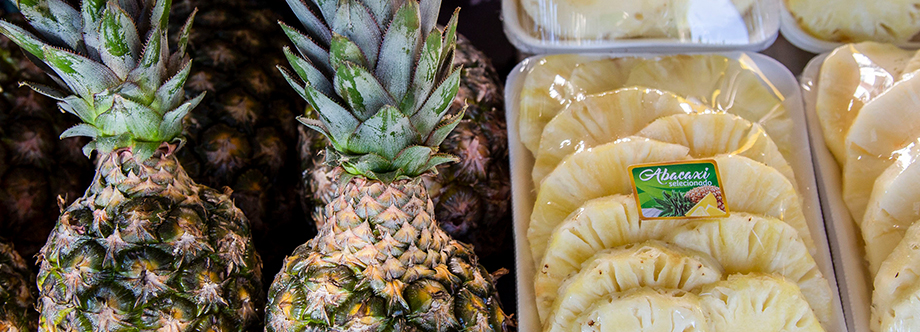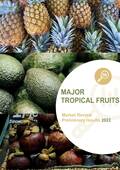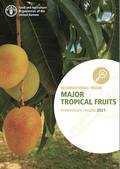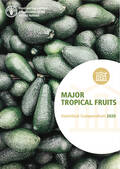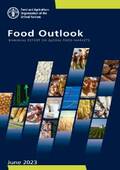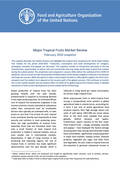Commodity in focus
Global trade in tropical fruits has expanded to unprecedented heights in recent years, reaching an estimated aggregate export volume of close to 11 million tonnes in 2023. Strong demand growth in key importing countries has led to ample investments in improving productivity and expanding production areas in supplying countries, notably for avocados.
Takeaways:
| An estimated 99 percent of tropical fruit production originates in developing countries, predominantly in Asia and Latin America and a smaller share in Africa. |
| In most producing zones, tropical fruits continue to be cultivated at the subsistence rather than the commercial level. |
| The combined exports of the four major tropical fruits represent only 5 percent of total production volume, and the remainder is consumed or otherwise utilized domestically. |
Did you know?
- With around 2 700 species, tropical fruits are not only a source of nutrition, but also of income generation for farmers who produce them for export.
- In global commodity trade, tropical fruits constitute a comparatively new group and since 1970, they have emerged as significant in the international marketplace.
- Export volumes of fresh tropical fruits display the fastest average annual growth rates among internationally traded food commodities.
- Advances in transportation, trade agreements and shifting consumer preferences in favour of these fruits led to trade growth.
- Tropical fruits are highly perishable during production and distribution, and so environmental challenges are among the key obstacles to sustaining production and ensuring that international markets are supplied.
- Increasingly, erratic weather events are a particularly acute challenge to growing tropical fruits because the vast majority are produced on smallholder farms of less than 5 ha where cultivation is highly dependent on rainfall.
Featured Resources
-
Major Tropical Fruits Market Review - Preliminary Results 2023
Published: January 2024
-
Strengthening the resilience of agricultural supply chains
The case of fresh fruits and vegetablesPublished: August 2023
-
OECD-FAO Agricultural Outlook 2023-2032
Bananas and Major Tropical Fruits - Outlook included in Other Products sectionPublished: July 2023
-
Durian Global Trade Overview 2023
Published: November 2023
-
Major Tropical Fruits. Market Review 2022
Published: August 2023
-
Major Tropical Fruits - Preliminary results 2022
Published: January 2022
-
Major Tropical Fruits - Statistical Compendium 2021
Published: October 2022
-
Major Tropical Fruits: Market review 2021
Published: September 2022
-
Major Tropical Fruits: Preliminary results 2021
Published: May 2022
-
Major tropical fruits - Market Review 2020
Published: October2021
-
Major tropical fruits - Statistical Compendium 2020
Published: October 2021
-
OECD-FAO Agricultural Outlook 2023-2032
Published: July 2023
-
Food Outlook – Biannual Report on Global Food Markets
Published: June 2023
-
Major Tropical Fruits Market Review February 2020 snapshot
Published: February 2020
-
Major Tropical Fruits Statistical Compendium
Published: September 2020
-
Banana Fusarium Wilt Tropical Race 4: A mounting threat to global banana markets?
Published: November 2019

